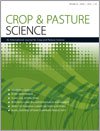Pea (Pisum arvense L.) is an important legume in many areas of the world, which is used for forage and grain production and could be used in intercropping systems. Intercropping of pea with oat (Avena sativa L.) and barley (Hordeum vulgare L.), in two seeding ratios 60 : 40 and 80 : 20, was compared with pea and two cereal monocrops for two growing seasons (2008–10), at the Aristotle University of Thessaloniki, Greece. The effect of the intercropping systems was determined on growth rate, plant height, chlorophyll content, DM, and N yield. Also, several competition and economic indices were used to evaluate the intercropping systems, such as land equivalent ratio (LER), relative crowding coefficient (K), aggressivity (A), competitive ratio (CR), actual yield loss (AYL), system productivity index (SPI), monetary advantage index (MAI), and intercropping advantage (IA). Growth rate of pea and cereals was lower by an average of 39 and 64%, respectively, in the intercrops than in the monocrops. DM yield was the highest in barley monocrop (13.00 Mg ha–1) followed by P80O20 intercrop (11.73 Mg ha–1). Pea monocrop, and P80O20 and P80B20 intercrops showed the highest crude protein (CP) concentration (137, 132 and 130 g kg–1 DM, respectively), whereas P80O20 intercrop also produced the highest CP yield (1552 kg ha–1). The LER, K, and AYL values (average 1.09, 1.75 and 0.29, respectively), were greater for both pea-oat intercrops compared with the pea-barley intercrops (average 0.98, 0.92 and 0.06, respectively), indicating that in these systems there was an advantage of intercropping for exploiting the resources of the environment. The A, CR, and partial AYL values in all intercrops were greater for oat and barley than pea, which indicated that cereals were more competitive partners than pea. The highest MAI, IA, and SPI values were recorded for P80O20 followed by P60O40 intercrops indicating that these intercropping systems were the most profitable. The results from this study showed that both pea-oat intercrops were more productive with high CP yield, and also they showed the best land-use efficiency.
How to translate text using browser tools
7 March 2012
Growth dynamics and agronomic-economic benefits of pea–oat and pea–barley intercrops
Christos A. Dordas,
Dimitrios N. Vlachostergios,
Anastasios S. Lithourgidis
ACCESS THE FULL ARTICLE

Crop and Pasture Science
Vol. 63 • No. 1
March 2012
Vol. 63 • No. 1
March 2012
aggressivity
competition
forage
intercropping advantage
LER
monetary advantage




